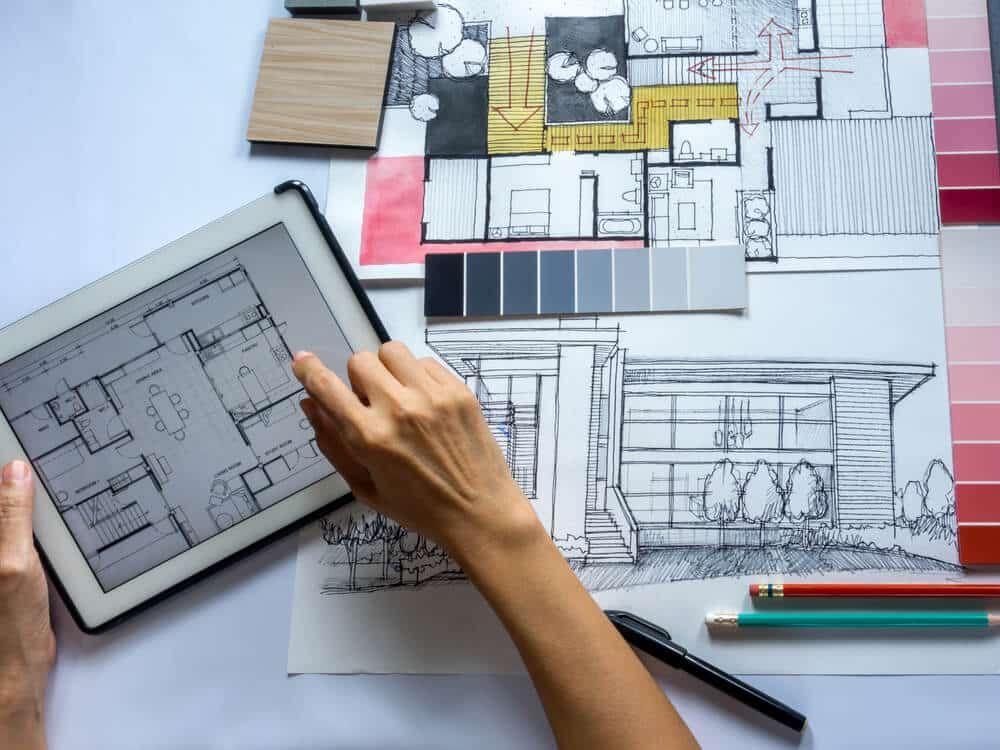Suppose you are buying a new home in Colorado and plan to perform a significant remodel that suits your surroundings. In that case, you may wish to enlist the services of a Denver interior design firm, especially if you want to optimize your house to embody a specific vision or vibe that will make your home a haven for you and your family. You can also use their services if you plan to build a house from scratch and want to design a masterpiece from the ground up with their expert guidance and assistance to make your dream a reality.
It is easy to confuse interior decorators and interior designers, as their job titles are similar, and some of their responsibilities overlap. Each profession has its place, and those within their respective fields specialize in different aspects of customizing a home (or potentially businesses and hotels) to achieve the perfect atmosphere for comfort and beauty and to enhance mental and emotional wellness.
If you are trying to decide which service to use, remember that interior decorators focus on an existing space as their limiting factor, using the floor plan as it already exists. Interior designers are unfettered by these limitations, as they work with architects and contractors to modify the existing structure as needed to fit the vision, which can mean reworking wiring, rerouting plumbing, and adding or removing walls, windows, or other features as necessary. In other words, they have fewer limitations, requiring a higher degree of education and a greater understanding of blueprints and structural design to transform your space into your ideal paradise.
What Interior Designers Do
To become an interior designer, a candidate must earn a Bachelor’s degree in Interior Design or a related field. For composition and modeling purposes, many become proficient in computer-aided design software. For best results when seeking a candidate for your project, seek out a professional with interior design certification and at least a year’s experience in the field. Any prospect should have a portfolio of previous work or designs which you can evaluate to see if their style and vision are compatible with yours.
Each designer will have their strengths and weaknesses, so when considering their services, find out which services they offer and to what extent, to ensure they have the expertise to handle your project.
Here are typical job responsibilities that a capable interior designer can perform:
Collaborating with Clients
A skilled interior designer should be open and communicative, collaborating with clients from start to finish on the enterprise. In the initial planning stages, they should meet with you to learn your vision for the project and what you hope to accomplish. They will discuss your expectations and limitations, including your proposed budget, and offer advice and suggestions, then listen to your ideas to ensure that you are both on the same page. Once you hammer down the introductory details, they will answer your questions and estimate what it will take to complete the project and a prospective timeline for the project.
One advantage to using an experienced interior designer is that they often have a network of contractors, vendors, and other professionals with whom they have built a solid working relationship. They can save you money through these connections.
Constructing a Plan
Once the initial parameters are in space, the design expert will evaluate the targeted living spaces, considering how best to achieve the desired atmosphere and flow and how to optimize space for the greatest desired effect. Whether working from blueprints or an existing house, they will likely make suggestions for any architectural design changes and make observations about prospective building materials.
It is part of their job to keep up with current trends and styles, so they will likely have various ideas for your consideration. You can be as involved in the process as you wish, taking an active role in your home design or trusting their professional expertise to achieve your desired goals.
A quality interior designer will check with you periodically to ensure that your visions align and to hear your ideas for each space based on your previous conversations. They will include you in every part of the process because they want you to have a home that will make you happy.
Once they have enough input, the designer will often prepare some form of visual representation of the proposed result. While in early cases, this may be as simple as a sketch, they may also use their computer expertise and a suitable design program to create a virtual graphic representation of the room so you can “see” what it will look like.
Once they have an exemplar in place, they will work with you to revise it and make tweaks to ensure your satisfaction.
Ensuring Proper Construction
An interior designer must be intimately familiar with building codes and requirements, so they will consult and collaborate with any architects and contractors on the project to verify that everything is up to specs and to identify any potential problems with proposed modifications.
Once everything is confirmed and ready to go, the interior designer will order and acquire the needed materials for the project and oversee their proper installation. They will work in tandem with the workers to ensure everything is set up according to the schematics and design plan.
Furnishings
With room and space designs underway, it is time to turn attention to selecting appropriate decor and furnishings for targeted spaces. The designer will have plenty of suggestions for maximizing space while establishing the ideal mood for each room and should consult with you for your ideas as well.
Throughout this process, they will update their sketches and graphic design models, representing the suggested changes and additions. This will help you understand the final product and agree on final plans. Once everything is finalized, the designer will order the furnishings and begin the organization and implementation of the items as they arrive.
The Bottom Line
Professional interior designers exist to make your home aesthetic dreams a reality. First and foremost, their job is to discover what you want your space to be and your budget, then find a way to make that happen. Without the limitations facing interior decorators, they can execute physical alterations to the house or plans to prepare the most attractive and efficient design possible, with an eye to safety and official building requirements.
They will hold your hand through the entire process, offering advice and suggestions, showing visual representations of the final product, and helping you select the perfect decor to bring your home to life.








